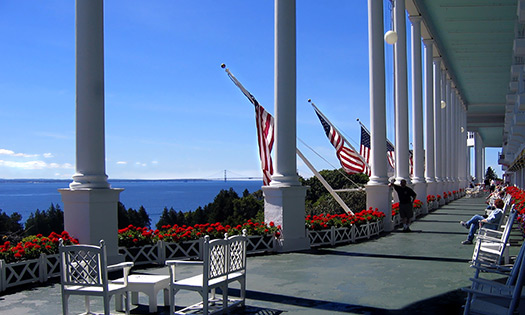History
Passenger cruising resulted from practical transportation. From the early canoes used by natives when traveling between summer and winter camps, cruise ships date back to at least 1847.
The EMPIRE, built in Cleveland, Ohio in 1844, was powered by steam and offered passenger cabins, salons for men and women, a bar, library, and band for dancing. She carried passengers between ports like Buffalo, New York and Chicago, Illinois.
With the help of ships like Anchor Lines INDIA, CHINA, and JAPAN, which were launched in 1871, the opportunity to enjoy the journey became more popular. With 43 cabins and a capacity for 120 passengers, the ships were often fully booked.
Anchor Line began replacing the sister ships with the larger TIONESTA in 1901, JUNIATA in 1904 and OCTORORA in 1910. They combined passengers and freight on east-west voyages. As passenger demand increased, freight decks were converted to cabin space and luxury observation suites.
Fun Takes Over
While the vessels were generally used as transportation, they also began to bring people from smog-filled city centers to remote communities. The Great Lakes became known for their fresh air. This movement, which began with families migrating for the summer months, led to the region’s settlement. Once here, many stayed.
By the turn of the century, the NORTHLAND and NORTHWEST were launching at Northern Steamship Company in Cleveland, Ohio. Passengers paid $30 to sail from Buffalo, New York to Duluth, Minnesota. Canadian Pacific, as a connector for its railheads, began sailing the ALGOMA, ALBERTA and ATHABASKA.
Birth of the Georgian Bay Line introduced what may be one of the most famous cruise ships to sail the Great Lakes. Construction of the NORTH AMERICAN and SOUTH AMERICAN in 1913 introduced a new level of cruising pleasure. They sailed between Detroit and Duluth, round trip, in five days, then to Buffalo and back in two more days. The season stretched from June to late August, with private charters occurring early and late in the season.
The AMERICAN TWINS were 321 feet long and carried 540 passengers and 160 crew. They had an abundance of parlor staterooms with private baths, as well as regular staterooms. They operated in the region until 1967.
The MILWAUKEE CLIPPER, was once the queen of the Great Lakes, constructed in 1905 by American Shipbuilding Company, Cleveland, OH as the JUNIATA. Originally built as a passenger and freight steamship, she had an elaborate wood superstructure which riveled those sailing the world’s oceans. Main ports of call were Buffalo, NY and Duluth, MN. In 1941 she was rebuilt as a luxury liner for the Wisconsin & Michigan Steamship Company and for the next couple of decades would sail between Muskegon, Milwaukee, and Chicago. The MILWAUKEE CLIPPER ended active service in 1970. She now sits in Muskegon, MI as a museum ship.

A Rediscovery
World War II and events in the 1950s hurt the industry. After a nearly 30-year lull, it began to rebound. A new generation of shipowners and passengers now see the untapped potential of the Great Lakes. In 1997, Hapag-Lloyd built the C COLUMBUS specifically to sail the Great Lakes. She was constructed with the maximum width for traversing the locks and carrying up to 400 passengers often filled with German citizens clamoring for a new kind of cruising experience. The ship, now owned by Plantours, was renamed MS HAMBURG in 2017 and continues to bring passengers into the region.
The 2022 cruise season will see the expedition market grow with the maiden voyage of Viking’s first expedition ship the OCTANTIS, the return of Victory Cruise Lines VICTORY I and VICTORY II, Pearl Seas Cruises, PEARL MIST, St. Lawrence Cruise Lines, CANADIAN EMPRESS, Plantours, MS HAMBURG and Ponant Cruise, LE DUMONT-DURVILLE and LE BELLOT.



